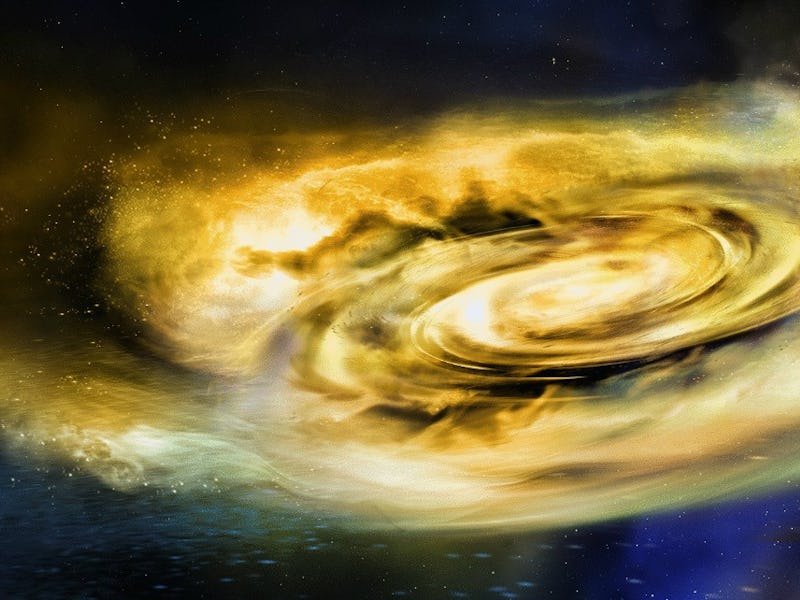Black Holes Have Some Seriously Wicked Wind
They’re like intergalactic hurricanes.

Black holes might not actually gobble up as much matter and light as was previously thought. Instead, new research published Monday in Nature shows that strong winds around black holes spray matter outwards into huge — potentially galaxy-sized — accretion disks, which is depicted below.
A team of scientists at the University of Alberta examined 20 years’ worth of data gathered by three space agencies. This study specifically looked at stellar-mass black holes — or black holes formed when massive stars collapse in on themselves — and how the winds from these interstellar objects might play a major role in creating other planets, stars, and even galaxies.
Their first discovery was that these winds actually blow a lot of the space dust caught up in black holes out into the surrounding area. This means that black holes can greatly alter the area around them when they’re feasting on matter.
A rendition of space winds creating an accretion disk of hot matter around a black hole.
“Winds must blow away a large fraction of the matter a black hole could eat,’’ Bailey Tetarenko, a University of Alberta Ph.D. student and lead author of the study, says in a statement. “In one of our models, the winds removed 80 per cent of the black hole’s potential meal.”
The team was able to detect these spiraling disks of hot particles by using X-ray detecting telescopes. The energy causing matter to continuously spin around a black hole causes the dust caught up in this storm to heat up and begin emitting X-rays.
While this research highlights some strong evidence that there are winds coming from the black holes observed, the cause of these winds remains a mystery.
“We think magnetic fields play a key role. But we’ll need to do a great deal of future investigation to understand these winds,” Craig Heinke, an associate professor of physics at the University of Alberta and co-author of the paper, says in a press release.
This research might not have answered all of the questions we have about black holes, but it certainly provides scientists with some hints as to how our own galaxy might have formed. At the center of the Milky Way resides a supermassive black hole — essentially a giant version of the stellar-mass black holes examined in the research. If this space wind discovery holds true for these larger black holes, it’s possible that Earth and our solar system were formed because of hot particles being slammed together by the winds from the Milky Way’s black hole.
We’d be the result of a colossal, intergalactic hurricane. Not too shabby.